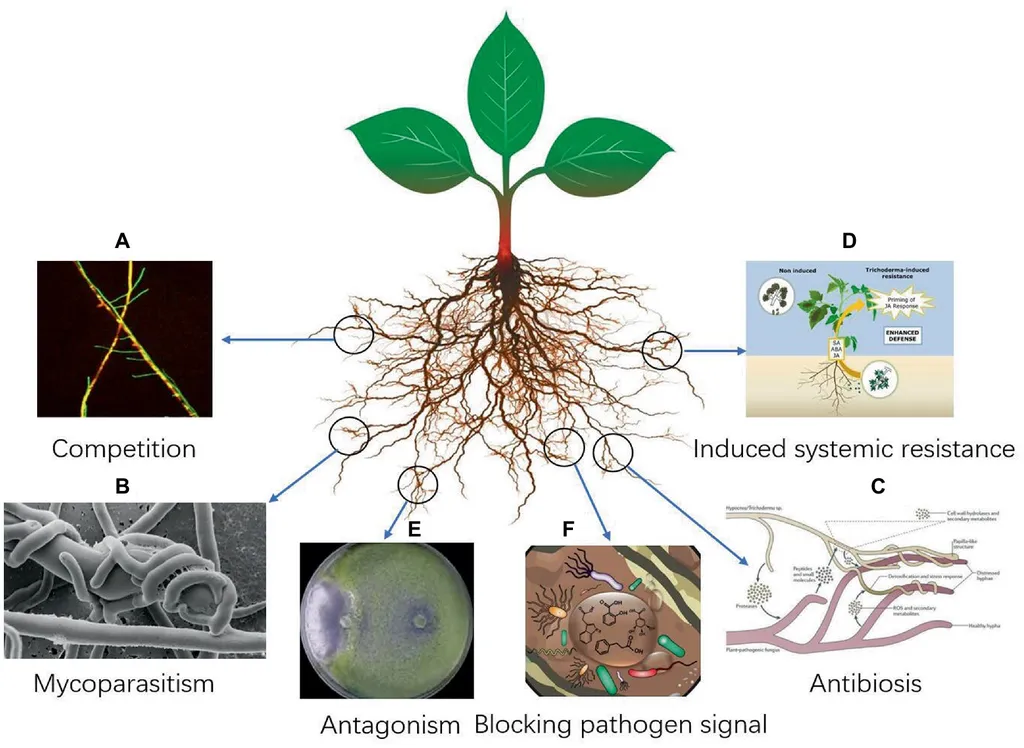In the ever-evolving landscape of sustainable agriculture, a groundbreaking study has emerged, offering a promising alternative to conventional disease management practices. Researchers, led by R. Vechithran, have uncovered a synergistic relationship between the beneficial fungus Trichoderma asperellum and biochar, a carbon-rich product derived from the pyrolysis of organic matter. This collaboration could potentially revolutionize the way we approach plant disease control, with significant implications for the agricultural sector.
The study, published in the ‘Journal of Pure and Applied Microbiology’ (which translates to ‘Journal of Pure and Applied Microbiology’ in English), delves into the intricate dynamics between these two components. Through a series of meticulously designed experiments, the research team demonstrated that the combination of T. asperellum and biochar can effectively inhibit the growth of Pythium aphanidermatum, a notorious plant pathogen responsible for devastating root rot diseases.
The results were striking. At optimized concentrations, the duo achieved an impressive 85.92% inhibition of P. aphanidermatum. “The synergistic effect was more than we anticipated,” remarked R. Vechithran, the lead author of the study. “It’s a significant step forward in our quest for sustainable and eco-friendly agricultural practices.”
But the benefits don’t stop at disease control. The research also revealed that biochar supplementation enhances cellulase enzyme activity and protein production, with the highest levels observed at 3% biochar concentration. This enhancement is attributed to the microhabitat created by biochar within submerged fermentation systems, which is conducive to microbial enzyme synthesis.
The implications of this research are far-reaching. By integrating biochar into disease management strategies, farmers can potentially reduce their reliance on synthetic fungicides, thereby minimizing environmental impact and promoting sustainable agriculture. “This approach not only improves agricultural productivity but also supports environmentally friendly pest management,” Vechithran explained.
The study also opens up new avenues for future research. Understanding the molecular mechanisms underlying this synergistic relationship, optimizing biochar formulations, and conducting field-scale validations are all crucial steps towards practical applicability across diverse agro-ecosystems.
As we grapple with the challenges of climate change and the need for sustainable practices, this research offers a beacon of hope. It underscores the potential of innovative, eco-friendly solutions in shaping the future of agriculture. With further exploration and development, the synergistic application of T. asperellum and biochar could become a cornerstone of sustainable plant disease management, benefiting farmers, consumers, and the environment alike.

